 Several reports mention that the central bank of Morocco, Bank Al-Maghrib, has issued the new 20 and 50 dirham notes on 19 December 2013 as part of the new series of banknotes which was introduced earlier this year. Originally the notes were supposed to be issued during national festivitites. The 50 dirham at the anniversary of the Green March on 6 November and the 20 dirham on 11 January, Morocco's independance day. What has caused the delay is unknown.
Several reports mention that the central bank of Morocco, Bank Al-Maghrib, has issued the new 20 and 50 dirham notes on 19 December 2013 as part of the new series of banknotes which was introduced earlier this year. Originally the notes were supposed to be issued during national festivitites. The 50 dirham at the anniversary of the Green March on 6 November and the 20 dirham on 11 January, Morocco's independance day. What has caused the delay is unknown.
The 20 dirham note shows the cities of Casablanca and Rabat on the back. The 50 dirham note a tree and Ouzoud Falls.
 Not really a surprise but the Bank of England (BoE) has decided that the new £5 and £10 will be printed on polymer. About three months ago, the BoE has taken sample £5 and £10 notes to shopping centres, showing the public that they are secure, cheaper and greener than paper-based money. And the public loved the new notes: 87% favoured the new notes over the old material.
Not really a surprise but the Bank of England (BoE) has decided that the new £5 and £10 will be printed on polymer. About three months ago, the BoE has taken sample £5 and £10 notes to shopping centres, showing the public that they are secure, cheaper and greener than paper-based money. And the public loved the new notes: 87% favoured the new notes over the old material.
The Bank said it expected to commission polymer producer Innovia to produce the sheets of plastic. This will be quite a blow to De La Rue, the supplier of banknotes to the BoE for a decade. De La Rue is likely to retain the contract to design and print the notes at the BoE-owned plant it operates in Debden.
The new notes will be smaller (by around 15%). The first polymer note to be printed and issued will be the £5 note with the image of Sir Winston Churchill. This note will enter circulation in 2016, shortly followed by the £10 note with the image of Jane Austen. The BoE has indicated that a decision would be made "in due course" on whether to make the most common note, the £20, also from polymer. But I would be surprised if it would be anything else than polymer.
 The National Bank of Kazakhstan has issued a new commemorative note of 1000 tenge on 12 December 2013. The note meassures 134 x 70 mm. From the press release:
The National Bank of Kazakhstan has issued a new commemorative note of 1000 tenge on 12 December 2013. The note meassures 134 x 70 mm. From the press release:
"Dedicated to Kultegin – the Monument of Turkic Runic Writing – signed by Kelimbetov K.N., the Chairman of the National Bank of the Republic of Kazakhstan. The obverse side of the banknote is a follows: the prevailing images are vertical. The key images are: the monument (Kazak Eli) on the right side of the banknote and images of the flying doves in the bottom right. In the middle of the left part there is a fragment of Kultegin sculpture. In the upper part there are the images of the symbols of state of the Republic of Kazakhstan: the National Emblem and State Flag.
The reverse side is as follows: the prevailing images are horizontal. The key images are: petroglyphic drawings of Turkic warriors and the monument of Turkic writing in the background. Lower left and right top there is a digital notation of the banknote nominal value and in the bottom center there is a literal notation of the nominal value in the Russian language. On the left side there is a holographic band of 12 mm wide with the image of a fragment of the State Flag, the National Bank’s logo and a legend ('Eskertkish tenge').
The circulation of the commemorative banknote of 1,000 tenge is 10,000,000."

 The Central Bank of Russia (CBR) has announced that a symbol for its ruble has been chosen. Over the last month more than 280,000 people took part in a vote to choose the new symbol. The chosen graphic uses the Cyrillic letter “P” which has its lower part crossed by a horizontal strip, Elvira Nabyullina, CBR chairman said. This version of the ruble symbol got more than 61% of the votes, with the second most popular receiving about 19% of votes.
The Central Bank of Russia (CBR) has announced that a symbol for its ruble has been chosen. Over the last month more than 280,000 people took part in a vote to choose the new symbol. The chosen graphic uses the Cyrillic letter “P” which has its lower part crossed by a horizontal strip, Elvira Nabyullina, CBR chairman said. This version of the ruble symbol got more than 61% of the votes, with the second most popular receiving about 19% of votes.
Russia hopes that the new symbol will get the same recognizability and standing as the $, € or the £. The symbol will appear on future coins and banknotes.
Below are, along with the winner, the other proposed symbols who didn't make it:
 The US Bureau of Engraving and Printing (BEP) has once again released a special folder containing a one dollar banknote. To celebrate the Year of the Horse and honor the Chinese Lunar New Year, the BEP has printed crisp uncirculated $1 notes with serial numbers beginning with "8888", which pronounced in Chinese sounds like the word for "prosper" and is considered by many to be especially lucky. The product is further limited to 88,888 units. Year of the Horse Lucky Money $1 notes are priced at $5.95 each and are placed in a red folder. If you want one yourself, you can visit the shop here.
The US Bureau of Engraving and Printing (BEP) has once again released a special folder containing a one dollar banknote. To celebrate the Year of the Horse and honor the Chinese Lunar New Year, the BEP has printed crisp uncirculated $1 notes with serial numbers beginning with "8888", which pronounced in Chinese sounds like the word for "prosper" and is considered by many to be especially lucky. The product is further limited to 88,888 units. Year of the Horse Lucky Money $1 notes are priced at $5.95 each and are placed in a red folder. If you want one yourself, you can visit the shop here.
U.S. Treasurer Rosie Rios displays the "Year of the Horse" lucky money note during a press conference in Washington D.C.:
 The Bermuda Monetary Authority has urged people to exchange their old horizontal banknotes for the new vertical notes. Shanna Lespere, Director of Operations at the Authority explained, "Back in June, the Authority announced that the legacy banknote series will no longer be legal tender after 31st December 2013. So the deadline is fast approaching. We have successfully been reducing circulation of these notes since that time, in conjunction with Bermuda’s banks. We strongly encourage everyone to visit their bank to exchange any legacy banknotes they may still have."
The Bermuda Monetary Authority has urged people to exchange their old horizontal banknotes for the new vertical notes. Shanna Lespere, Director of Operations at the Authority explained, "Back in June, the Authority announced that the legacy banknote series will no longer be legal tender after 31st December 2013. So the deadline is fast approaching. We have successfully been reducing circulation of these notes since that time, in conjunction with Bermuda’s banks. We strongly encourage everyone to visit their bank to exchange any legacy banknotes they may still have."
Important dates for the calling in period include:
Up to 31st December 2013
- The public may use the legacy banknotes to purchase goods and services.
- The public may also exchange legacy banknotes at their bank (i.e. the banks will exchange banknotes for their existing customers) or at the Bermuda Industrial Union Member’s Credit Union (if they are a member). "It is very important to note that the public cannot exchange notes at retail shops or any other cash business," added Mrs. Lespere. "They also cannot exchange the notes at the Bermuda Monetary Authority."
As of 1st January 2014
- The legacy banknotes will no longer be legal tender (i.e. they cannot be used to purchase goods
and services).
- The public has ten years to exchange legacy banknotes at their bank or at the Credit Union.
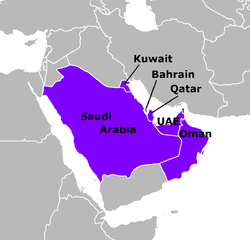
 After the recent news on the proposed single currency for East Africa, could there be another group of countries moving towards a single currency? The Gulf Cooperation Council (GCC) consists of Bahrain, Kuwait, Qatar, Saudi Arabia, the United Arab Emirates and Oman. These six countries have been discussing a currency union similar to the Eurozone for more than 15 years. There was once even a name for the currency: the Khaleeji. That currency was turned down however in 2009 and talks seemed to go nowhere from then on. Sometimes they agreed on a single currency, then one country said no, then two countries etc. Eventually Oman and the United Arab Emirates pulled out of these talks altogether.
After the recent news on the proposed single currency for East Africa, could there be another group of countries moving towards a single currency? The Gulf Cooperation Council (GCC) consists of Bahrain, Kuwait, Qatar, Saudi Arabia, the United Arab Emirates and Oman. These six countries have been discussing a currency union similar to the Eurozone for more than 15 years. There was once even a name for the currency: the Khaleeji. That currency was turned down however in 2009 and talks seemed to go nowhere from then on. Sometimes they agreed on a single currency, then one country said no, then two countries etc. Eventually Oman and the United Arab Emirates pulled out of these talks altogether.
Now after a few years of silence on the subject, there is all of a sudden a rumour that the single currency will be announced at the end of December. This common currency to be announced by Bahrain, Kuwait, Qatar and Saudi Arabia would be pegged to the dollar, an anonymous source close to decision-makers said.
In September, an official of the European Central Bank (ECB) said that the GCC should not introduce a common currency before its members have a clear common objective. Yves Mersch, an executive board member of the ECB, reportedly said at a global financial summit that no union of states would be ready for a common currency if there was no political consensus. The Wall Street Journal, which also reported on the matter, states: "... analysts and observers are mostly sceptical of this happening anytime soon. For one, they say, there has been no news that significant progress has been made toward a monetary union."
The GCC itself denounced the rumours last night, saying: "The Monetary Council affirms that the reports by some newspapers and websites over the date of the issuing of the single Gulf currency are completely false, not based on accurate information nor reliable sources".
 On 4 December 2012 Norway announced that the process of developing a new banknote series had officially started. The first step for the Norges Bank was to choose a theme for the new series. Once the theme had been approved, the national bank would choose the main elements of the banknotes' design.
On 4 December 2012 Norway announced that the process of developing a new banknote series had officially started. The first step for the Norges Bank was to choose a theme for the new series. Once the theme had been approved, the national bank would choose the main elements of the banknotes' design.
That theme has now be chosen and it´s The Sea, reflecting its importance for Norway's business sector and economic prosperity. This is from the press release:
Norges Bank started work on the new banknote series in autumn 2012. This will be the eighth series. There is a need to enhance banknote security to ensure that current and future Norwegian banknotes are resistant to counterfeiting. The work is well underway and a number of important decisions concerning the new series were made by Norges Bank's Executive Board in the fourth quarter of 2013. The theme, denomination breakdown, material, colours, language and size of the notes have now been decided.
"Finding a theme for the new banknote series has been an extensive and exciting process, with a creative input of ideas from various contributors," says Trond Eklund, Director of Norges Bank's Cashier's Department.
Norges Bank has sought to find a theme that runs through the banknote denominations, binding them together into a banknote series. "The Sea" provides a virtually infinite array of visual possibilities. The theme will be reflected both on the obverse and reverse face of the notes, breaking with the tradition of portraiture.
"We have chosen a theme we consider to be original and particularly relevant for Norway, which is a small country but a major coastal nation. Norway has a total coastline of 83 000 km, the longest in Europe. The use of marine resources, combined with the use of the sea as a transport artery, has been crucial to the development of Norway's economy and society," says Eklund.
The current denomination breakdown of 50 – 100 – 200 – 500 – 1000 and the current main colours will be retained for the new series. All the notes, which will be printed on cotton paper, will be 70 mm in height, but the width will increase with each denomination by 7 mm. This means that the 50 krone note will be 126 mm wide, while the 1000 krone note will be 154 mm wide. The Bank's official name will continue to be written in Norway's two official written languages, Bokmål and Nynorsk, i.e. Norges Bank and Noregs Bank.
In order to attract as many creative and interesting design proposals as possible, Norges Bank is now in the process of launching a design competition. The competition will be run in two stages; first a pre-qualification competition and then the final competition between five to eight participants to select the winning design.
No word yet on a timeline or a proposed date of issue.
 The member states of the East African Community (Burundi, Kenya, Rwanda, Tanzania and Uganda) have signed a monetary-union deal. One aspect of this deal is a 10-year timeline for the establishment of a regional single currency. The agreement is the result of nearly a decade of talks. The member states will now try to establish institutions (like a regional central bank and a statistics body) to support the single currency.
The member states of the East African Community (Burundi, Kenya, Rwanda, Tanzania and Uganda) have signed a monetary-union deal. One aspect of this deal is a 10-year timeline for the establishment of a regional single currency. The agreement is the result of nearly a decade of talks. The member states will now try to establish institutions (like a regional central bank and a statistics body) to support the single currency.
"With a total population of about 135 million people, East Africa is becoming an investment magnet following a flurry of natural-gas and oil discoveries. Uganda and Kenya have discovered huge amounts of oil, while Tanzania boasts of huge natural-gas reserves. International companies have already started exploiting these resources, and the region is poised to become the next major energy hub in Sub Saharan Africa."
 The Central Bank of Moldavia has issued a commemorative banknote on 29 November 2013. The note commemorates the 20th anniversary of the national currency.
The Central Bank of Moldavia has issued a commemorative banknote on 29 November 2013. The note commemorates the 20th anniversary of the national currency.
The note is the same as the existing 200 lei note but has an added line of text: "20 DE ANI". Only 200,000 copies have been printed.
 Several news agencies report that the Central Bank of Tunisia has issued a new 10 dinar note yesterday 28 November 2013. The blue note's dimensions are 148 mm x 73 mm. It features images of Abou El Kacem Chebbi on the front and El Medersa El Bachia on the back. There are numerous security features added like intaglio printing, watermarks, a holographic strip, latent images, micro-letters, metallic parts, Omron circles and iridescent ink.
Several news agencies report that the Central Bank of Tunisia has issued a new 10 dinar note yesterday 28 November 2013. The blue note's dimensions are 148 mm x 73 mm. It features images of Abou El Kacem Chebbi on the front and El Medersa El Bachia on the back. There are numerous security features added like intaglio printing, watermarks, a holographic strip, latent images, micro-letters, metallic parts, Omron circles and iridescent ink.
The new banknote will circulate concurrently with other issues.
 Japan's Ministry of Finance has launched a promotion campaign in the hope of attracting orders to print banknotes for other economies, press agency Bernama reports:
Japan's Ministry of Finance has launched a promotion campaign in the hope of attracting orders to print banknotes for other economies, press agency Bernama reports:
Through the National Printing Bureau under its jurisdiction, the ministry hopes to attract such orders by highlighting Japan's cutting-edge anti-counterfeit technologies, sources said. The ministry is also offering a service for printing passports. Currently, the bureau prints Japanese bank notes. In the post-World War II period, Japan printed paper money for South Korea during the Korean War but has no other experience in printing money for other countries.
The bureau has set up a sales office to promote its services to governments and central banks overseas. It has sent officials to a number of emerging economies including Mongolia, Palau and Bhutan and plans to make sales efforts in other countries. The bureau is studying whether there are any plans by other countries to change their bank notes and solicit bids, the sources added.
 Article from 23 April 2013: The Central Bank of Nigeria has announced it will stop the production of polymer notes and will return to paper banknotes. The main reason for this step is the fading of the banknotes, especially the smaller denominations. The Central Bank had organised numerous campaigns educating the public on the use of banknotes but apparently to no avail.
Article from 23 April 2013: The Central Bank of Nigeria has announced it will stop the production of polymer notes and will return to paper banknotes. The main reason for this step is the fading of the banknotes, especially the smaller denominations. The Central Bank had organised numerous campaigns educating the public on the use of banknotes but apparently to no avail.
The deputy governor has announced that production of new polymer notes has already been cancelled. By the middle of of 2013 the bank will begin producing paper money again, starting with the lower denominations.
Update 27 november 2013: Nigeria has again confirmed that the production of polymer notes will be cancelled. "The Central Bank of Nigeria (CBN) signed a deal in 2006 with Australia's Securency International to print lower more-circulated units of the naira in polymer, while higher denominations were kept in paper form. But six years down the line -- and after allegations that the manufacturer bribed foreign officials to secure contracts, including in Nigeria -- the CBN said it was being forced to reverse the policy."
The decision to switch back to paper notes is questioned by many experts since the current trend is to convert to polymer. The issuing of paper notes is expected to begin in 2014 with the new notes printed by the state-run Nigerian Security Printing and Minting Company.
 The European Central Bank had already announced that the new 10 euro note would be issued in 2014. Now they've given a new date to look forward to: 13 January 2014. On that day the design of the new banknote will be unveiled.
The European Central Bank had already announced that the new 10 euro note would be issued in 2014. Now they've given a new date to look forward to: 13 January 2014. On that day the design of the new banknote will be unveiled.
The ECB announced this happy news today at a seminar launching a Eurosystem Partnership Programme which has been set up for banknote equipment manufacturers and suppliers as well as clients and users.
This will be the second issue in the new Europa series. The new note will be issued later next year. When exactly? The new 5 euro note was presented on 10 January 2013 so if they keep more or less the same presentation and issue dates, you would expect the new 10 euro around May 2014. At this site however the ECB says it will "distribute leaflets about the new banknotes to points of sale across the euro area at the end of June 2014, ensuring cash handlers have ample opportunity to prepare for their circulation." So this probably means the new 10 euro will be available in the second half of 2014, even "after the summer".
« Vorige Pagina |
Toon berichten 721-735 van 937 |
Volgende Pagina »
 Several reports mention that the central bank of Morocco, Bank Al-Maghrib, has issued the new 20 and 50 dirham notes on 19 December 2013 as part of the new series of banknotes which was introduced earlier this year. Originally the notes were supposed to be issued during national festivitites. The 50 dirham at the anniversary of the Green March on 6 November and the 20 dirham on 11 January, Morocco's independance day. What has caused the delay is unknown.
Several reports mention that the central bank of Morocco, Bank Al-Maghrib, has issued the new 20 and 50 dirham notes on 19 December 2013 as part of the new series of banknotes which was introduced earlier this year. Originally the notes were supposed to be issued during national festivitites. The 50 dirham at the anniversary of the Green March on 6 November and the 20 dirham on 11 January, Morocco's independance day. What has caused the delay is unknown. 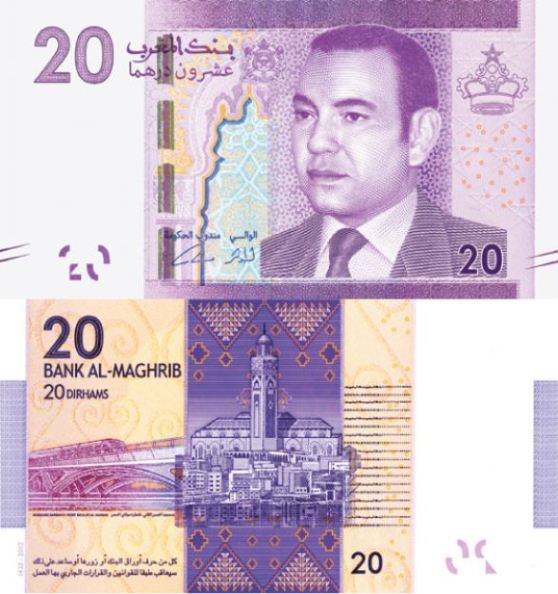
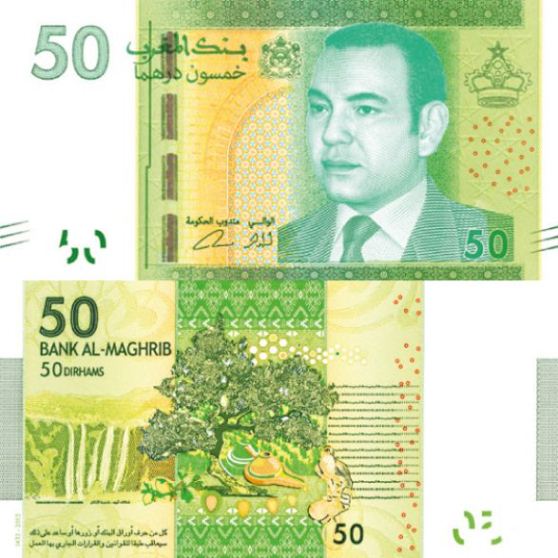
 Not really a surprise but the
Not really a surprise but the 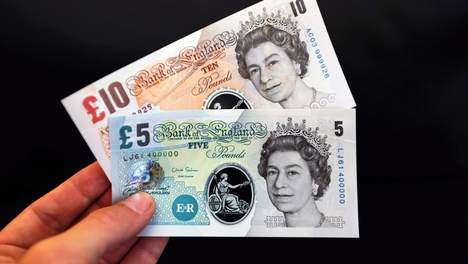
 The
The 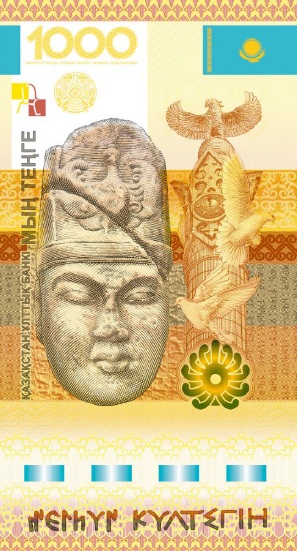
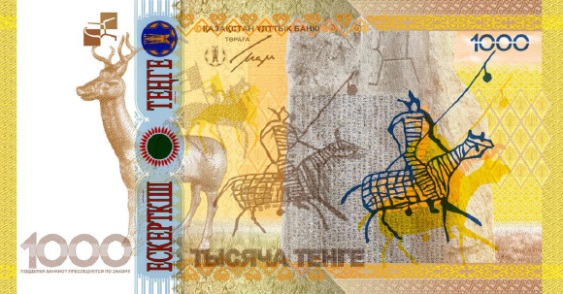

 The Central Bank of Russia (CBR) has announced that a symbol for its ruble has been chosen. Over the last month more than 280,000 people took part in a vote to choose the new symbol. The chosen graphic uses the Cyrillic letter “P” which has its lower part crossed by a horizontal strip, Elvira Nabyullina, CBR chairman said. This version of the ruble symbol got more than 61% of the votes, with the second most popular receiving about 19% of votes.
The Central Bank of Russia (CBR) has announced that a symbol for its ruble has been chosen. Over the last month more than 280,000 people took part in a vote to choose the new symbol. The chosen graphic uses the Cyrillic letter “P” which has its lower part crossed by a horizontal strip, Elvira Nabyullina, CBR chairman said. This version of the ruble symbol got more than 61% of the votes, with the second most popular receiving about 19% of votes.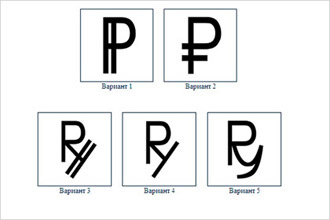
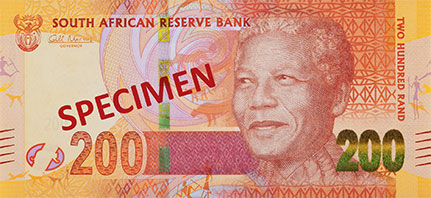
 The US
The US 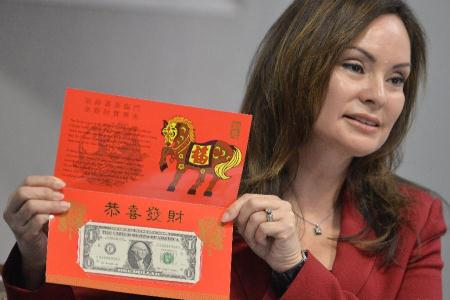
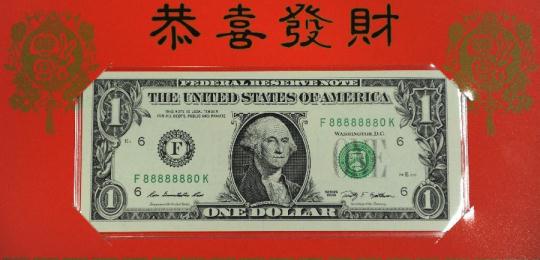
 The Bermuda Monetary Authority has
The Bermuda Monetary Authority has 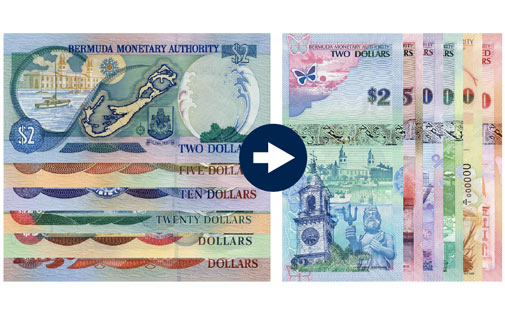

 After the recent news on the proposed
After the recent news on the proposed  On 4 December 2012 Norway
On 4 December 2012 Norway  The member states of the
The member states of the 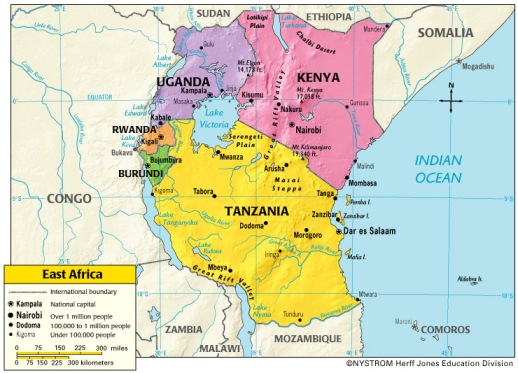
 The
The 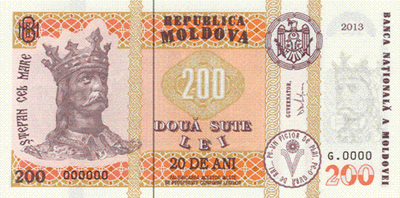
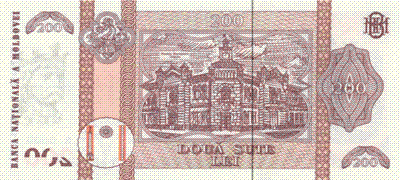
 Several news agencies
Several news agencies 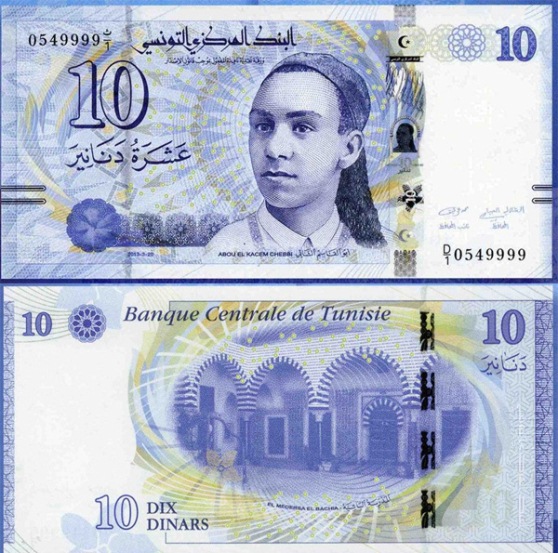
 Japan's Ministry of Finance has launched a promotion campaign in the hope of attracting orders to print banknotes for other economies, press agency Bernama
Japan's Ministry of Finance has launched a promotion campaign in the hope of attracting orders to print banknotes for other economies, press agency Bernama 
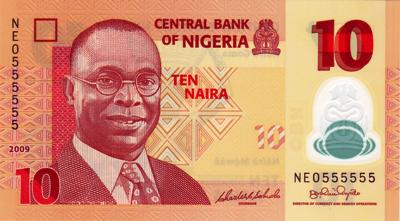
 The
The 








